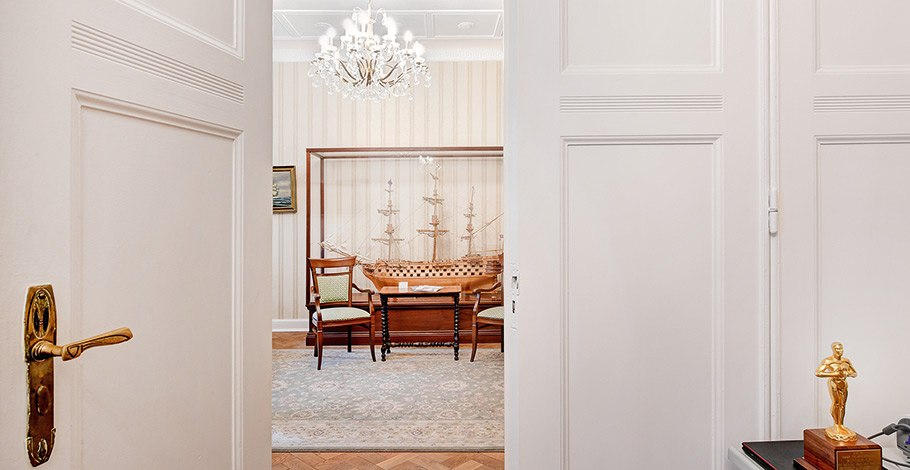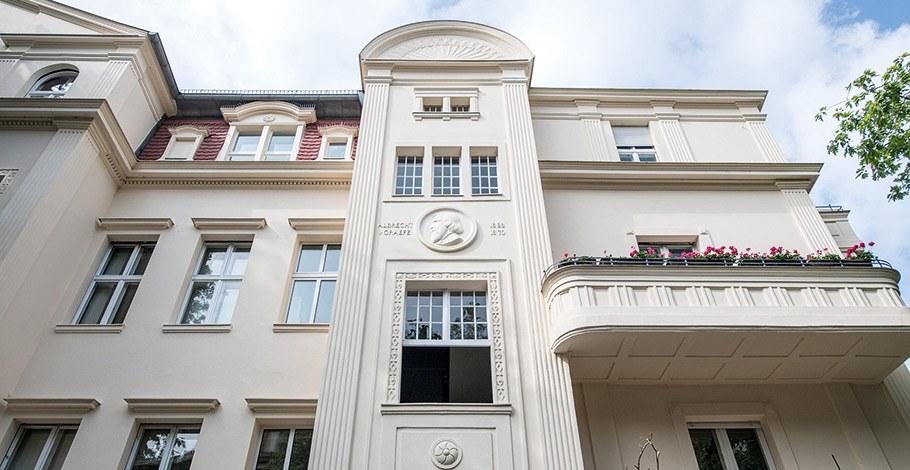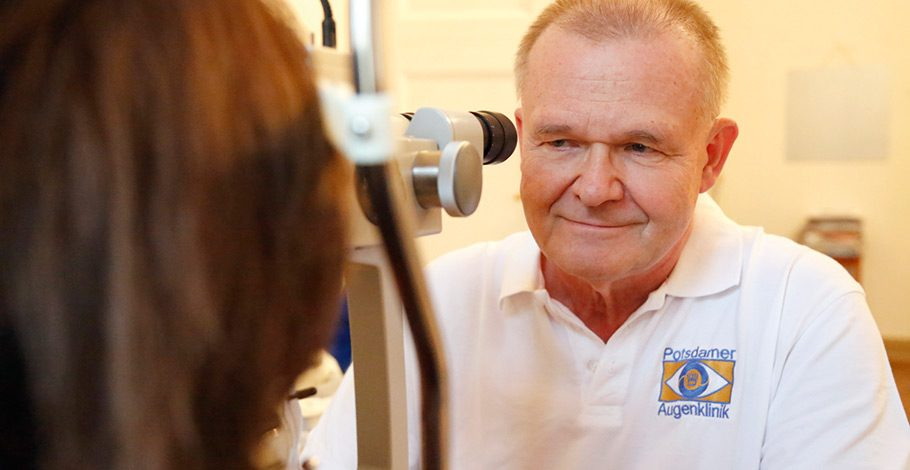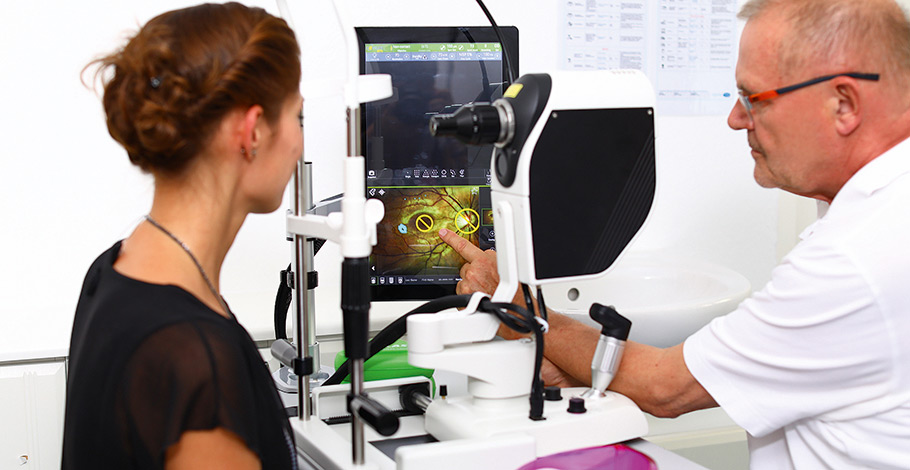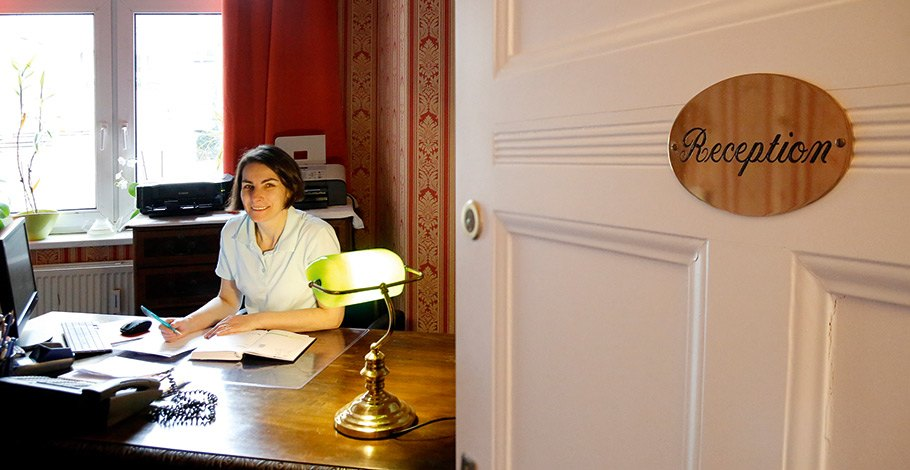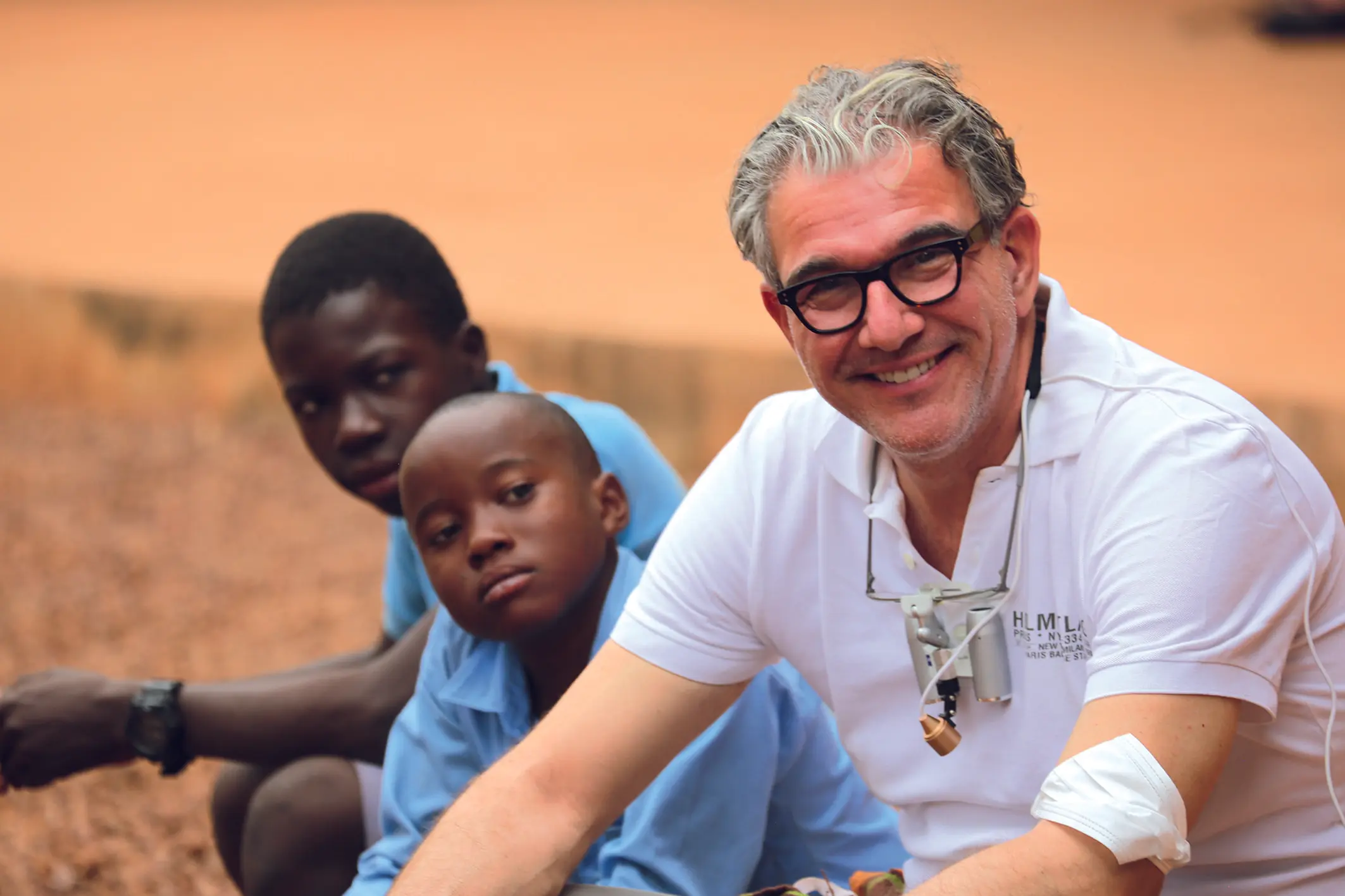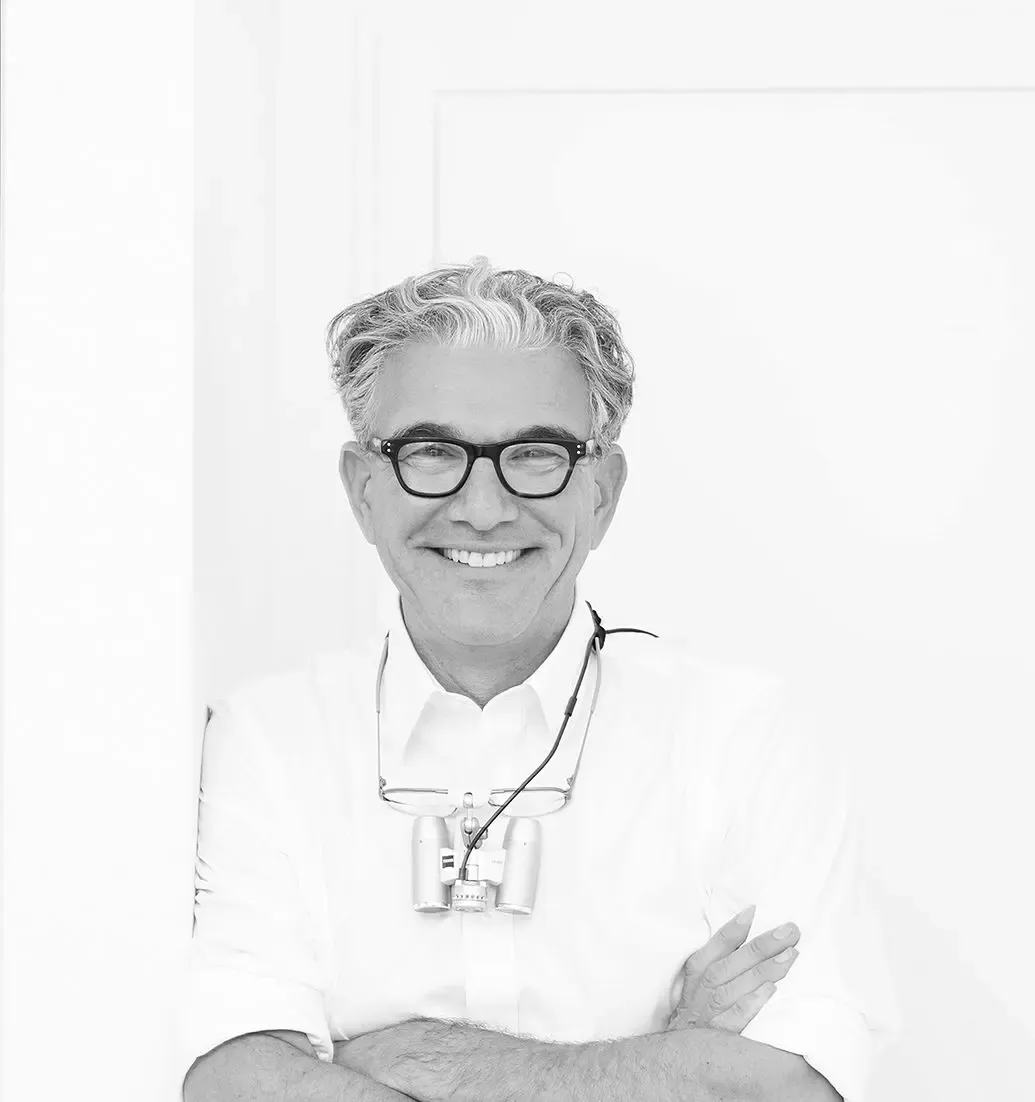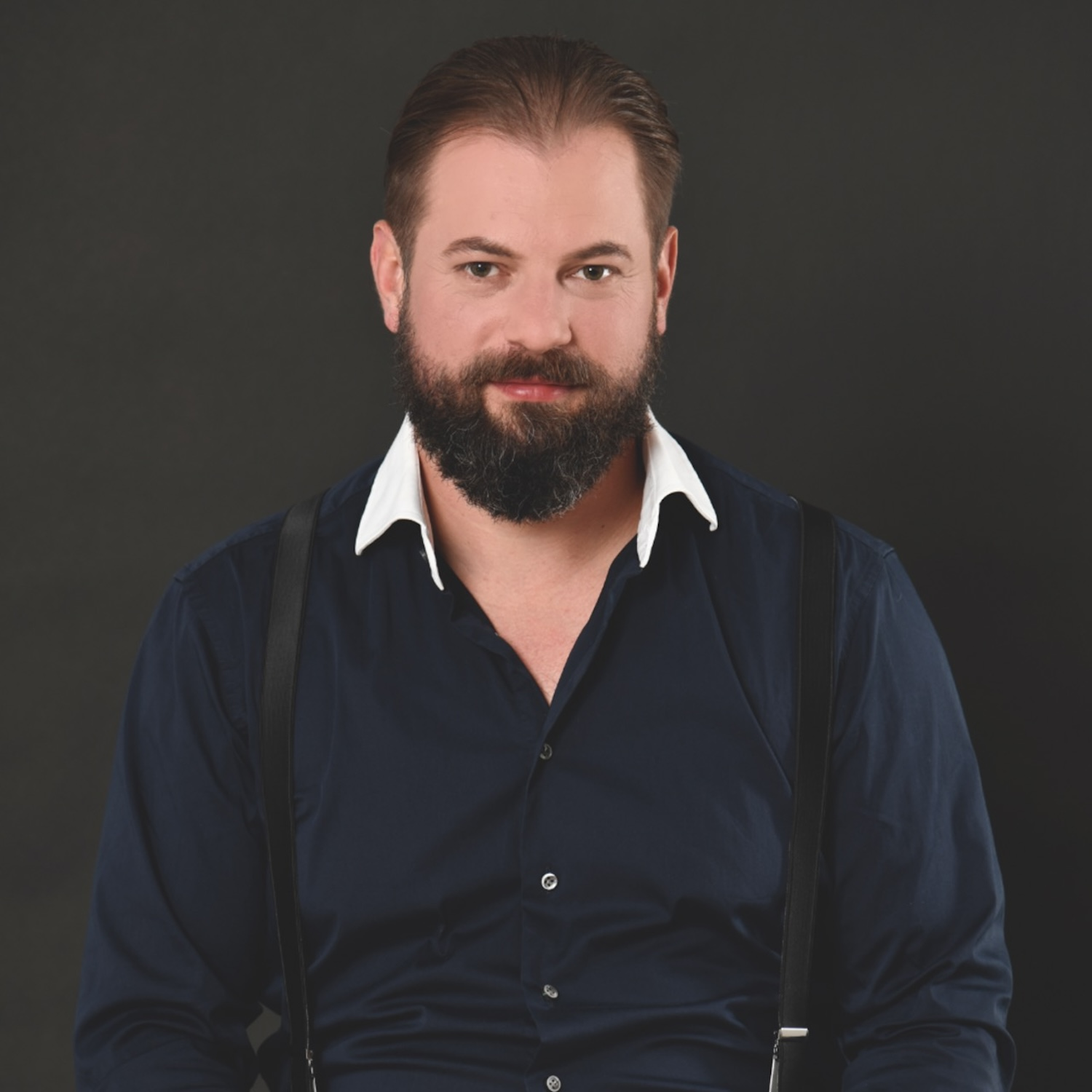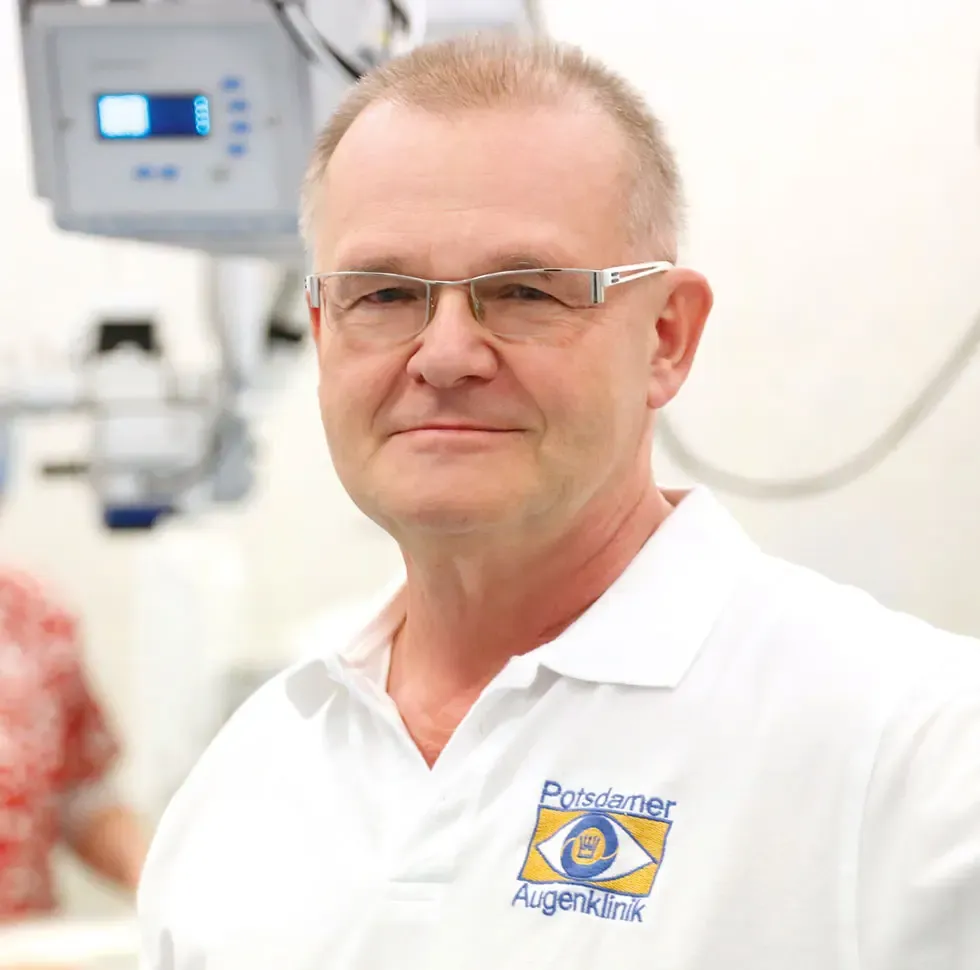
Services
"The Innovator"
That's what the American "Journal of Cataract and Refractive Surgery" once called the Potsdam ophthalmologist Volker Rasch, after he designed novel implants for cataract surgery in the late 1990s. Even during the GDR era, the ophthalmologist - in addition to his work as senior physician at the ophthalmology clinic of a Potsdam hospital - had started to produce artificial lenses. Previous training as a precision mechanic and optician was beneficial to him here.
History was kind to Dr. Rasch. In 1989, the inner-German borders opened, and the way was clear for his dreams. The ophthalmologist bought an Art Nouveau house on credit, renovated it, and opened a practice here in 1991, followed three years later by the Potsdam Eye Clinic in the Graefe House. One of the passions of the Potsdam ophthalmologist is the cataract. He has been operating on cataracts for over 30 years, since 2014 with the so-called femtosecond laser. “As early as 2002, we were - probably among the first - to have the idea of using this laser energy for cataract surgery as well,” said Dr. Rasch, head of the Potsdam Eye Clinic in the Graefe House.
“LASICAT, since 2004 our name for the procedure, allows for precise surgery that is hardly possible manually for the surgeon. The fragmentation of particularly very hard eye lenses is significantly gentler than with conventional methods. Development does not stand still here either. We are actively working on further developing the technology and the application of the femtosecond laser or are currently pointing out possible paths for future developments through further patent applications.”
Doctors with vision
His first patent application for this was actually filed in 2003. At that time, Dr. Rasch received professional advice from the German physicist Dr. Georg Korn, who, together with the current Nobel Prize-winning physicist Prof. Gerard Mourou, conducted the first fundamental studies and publications on femtosecond laser technology in the USA.
The doctor is considered a visionary among his peers. He is pushing forward outpatient surgery in the field of ophthalmology . And he was one of the first in this country to use multifocal lenses to replace patients' own clouded lenses. Multifocal lenses allow vision at various distances. "Suddenly people can manage without glasses," explains Dr. Rasch. "For many, this fulfills a lifelong dream."
The ophthalmologist has filed over 50 patents to date. "The ideas never run out," he smiles. His greatest coup: an additional implant for lenses that allows a new pupil to form in cases of iris defects. Together with American Ken Rosenthal, he first implanted it in a patient in New York in 1995 and received several film Oscars for the surgical films shown at conferences.
Even after more than 50,000 operations, the ophthalmologist values high safety for every single patient. The pre-examinations for cataract and laser surgeries at the Potsdam Eye Clinic are so comprehensive that Dr. Rasch has coined his own terms for them: "LASIK-Plus" and "Cataract-Plus."
We insert the lens into the patient that best meets their individual vision requirements.
Dr. Volker Rasch
The diagnostics go far beyond the required level. Whether it's the analysis of the tear film with the LipiView, an Optomap examination of the retina, or parallel diagnostics in corneal topography - the ophthalmologist conducts numerous examinations in parallel with two devices. "Perhaps the patient is focusing incorrectly or the tear film is fluctuating, so that despite the most modern technology, measurement errors could occur," explains the busy doctor about the effort. These could in turn influence the choice of lens and the surgical outcome.
Based on the measurement results, Dr. Rasch selects the appropriate one for his patients from a range of premium lenses. "Our goal is to always use the lens that achieves the best possible vision and most closely matches the individual's visual requirements, whether I am replacing the lens or inserting an additional lens for the patient."
Measurement errors can be reduced by taking multiple measurements.
Comprehensive aftercare
Even after the procedure, the experienced doctor and his team focus on comprehensive care. He sees his patients not only on the day after the surgery, but also takes care of them in the long term. "We put a lot of effort into post-operative checks to ensure that patients are truly satisfied in the end." His care is widely known. Whether with lenses, lasers, or combined procedures - over 2000 procedures are performed annually at the Potsdam Eye Clinic to enable better vision without glasses or contact lenses.
Patients come from both home and abroad, including many athletes. For over 15 years, Dr. Rasch was the exclusive service partner of the German Sports Aid, operating on world champions and Olympic champions like Christoph Harting. In addition, patients with nearly all diseases of the cornea and retina can be treated gently using the latest technologies. For example, using micro-pulses with a laser: computer-aided and navigated with the NAVILAS. Since early 2017, the ophthalmology practice has been an official teaching practice of the Medical University of Brandenburg. Dr. Rasch is pleased because this way he can pass on his knowledge to the next generation.
Anyone who wants can rest in the in-house, stylishly furnished guesthouse after the procedure. Over many years, Dr. Rasch has collected original furniture from the turn of the century for each room. Breakfast and freshly baked goods are available right next door: A café and the restaurant "Zum Starstecher" are also part of the Graefe-Haus. The name is no coincidence: Albrecht von Graefe founded modern ophthalmology at the Charité around 150 years ago - and to this day, Dr. Rasch considers him an idol.

